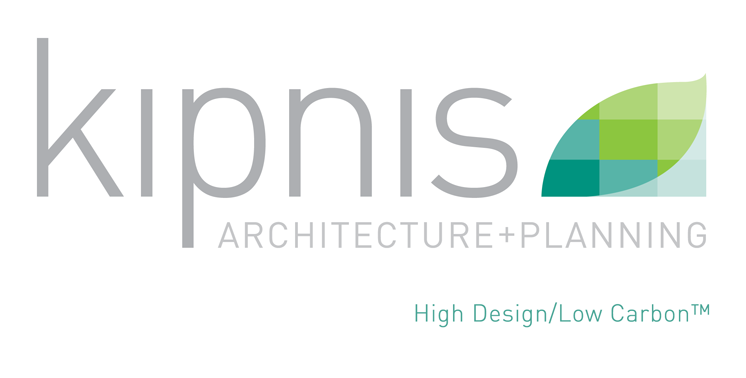Passive House 1 | Evanston
This modern home, located in one of Evanston’s historic districts, is on track to be Evanston’s first certified Passive House, one of the most rigorous building certifications for comfortable, energy efficient, and resilient homes. With tight construction and a highly insulated envelope, Passive House buildings operate on just one tenth the energy of an average home.
The design was carefully reviewed and approved by the Evanston Preservation Commission. It had to relate to the existing neighboring homes, which ranged from 100 to 130 years old. This was accomplished by carefully aligning the design’s various design elements, heights and proportions to its neighbors.
The key feature of the first floor is the wide open floor plan that runs from the front to the back and highlights the centrally located Valcucine kitchen, which is manufactured to exacting sustainable European standards. The family room at the end of this open space features an extremely realistic, carbon free, ‘vapor’ fireplace in addition to a dramatic vaulted wood ceiling.
From a floor plan standpoint, the home is designed for aging in place. It features a first floor office that can convert to a bedroom suite, with larger doors and wider hallways. A large workout room opens to the backyard patio. Upstairs are three bedrooms, two bathrooms and the laundry.
The exterior has a ‘light shelf’ on the south and west sides of the rear of the house. Light shelves shade the interior from the high summer sun while allowing the low winter sun to come in and heat the interior. Sunlight hitting the top side of the light shelf is redirected to the ceiling of the family room, providing great daylighting deep into the space.
The home is all electric, without a natural gas line. No gas line = no fossil fuel emissions. The home has a 12.2 kW solar array, which makes the home ‘Net Zero’, meaning that all of the home’s power, on an annual basis, is provided by the solar array. A future battery back up system would smooth out the solar power generation so it lasts beyond just when the sun is shining.
The home only has a crawl space to minimize the use of concrete in the foundation. The footings and foundation walls use CarbonCure - a more sustainable concrete that is injected with CO2 and less cement - which reduces the concrete's overall carbon footprint by up to 10%.
-
This home is on track to be Evanston’s first certified Passive House. Passive House requires the careful use of windows as well as very high levels of insulation - the walls are R55, the roof is R65 and the crawl space floor is R15.
-Instead of standard wood stud framing, this home utilizes 2x8 Tstuds™, thermally isolated wall studs that are filled with continuous insulation that address thermal bridging
-The concrete mix will use CarbonCure, which contains takes carbon dioxide and injects it into the concrete and is permanently transformed into calcium carbonate, i.e. limestone. This process also requires less CO2 intensive cement in the concrete mix.
-Extremely airtight building envelope that is approximately ten times tighter than typical construction.
-An energy recovery ventilation (ERV) unit provides efficient and controlled outdoor air into the home to significantly enhance indoor air quality. MERV 13 air filters will be used.
-High-performance triple glazed, low ‘E’, argon filled Sierra Pacific windows are used to reduce heat loss and manage solar heat gain.
-A highly efficient ducted and zoned electric Mitsubishi heat pump HVAC system is used-The heating and cooling systems are connected to programmable smart thermostats, controlled remotely by mobile devices.
-The first floor has a high, 10’ tall ceiling. This is typical of vintage homes, especially those in the historic neighborhood. The higher ceiling allowed hotter air to stay above where the occupants are.
-Ceiling fans are used through the house as a more efficient way to keep cool during certain times of the year.
-In lieu of a wood burning fireplace, a very realistic carbon free ‘water vapor’ fireplace is located in the family room
-A PAC-Clad standing seam metal roof is used which is made from recycled metal and is highly recyclable.
-Siding on the front bay is made from cement fiberboard.
-The exterior has a ‘light shelf’ on the south and west sides of the rear of the house. Light shelves shade the interior from the high summer sun while allowing the low winter sun to come in and heat the interior. Sunlight hitting the top side of the light shelf is redirected to the ceiling of the family room, providing great daylighting deep into the space.
-Operable windows at strategic location will provide natural fresh-air cross ventilation.
-A 12.2 kW solar array is mounted on the metal roof of the main house and the garage.
-EV charging is provided in the garage
-A future battery backup would be powered by the solar array, providing power at night and during any power outage.
-All lights have LED fixtures and be fully dimmable.
-The kitchen cabinets are from Valcucine, which has an extensive list of sustainable features. The kitchen will have a built-in recycling center
-The cooktop will be an induction unit, which is an extremely efficient way to cook. Other appliances are Energy Star rated.
-Low flow plumbing fixtures will be installed. WaterSense ™ rated dishwasher and washing machine are specified.
-There are no combustion appliances in the house. The mechanical system, heat pump water heater, heat pump dryer and the induction cooktop are all electric. This will eliminate on site CO2 emissions.
-Paints, sealants and adhesives will have no VOC’s.
-The wood flooring is from sustainably managed forests and will have low or no VOC’s and no added urea-formaldehyde.
-The landscape is designed using native plants, and is illuminated with minimal LED lighting






